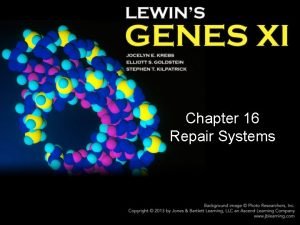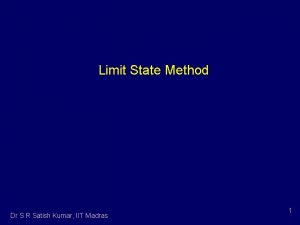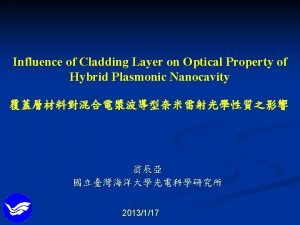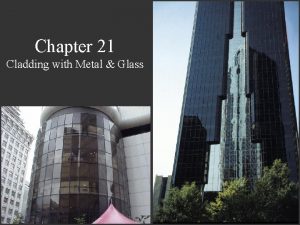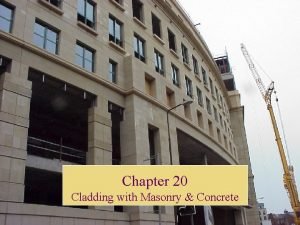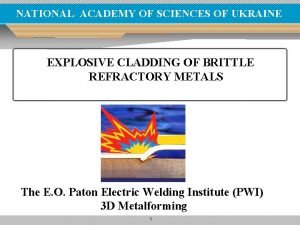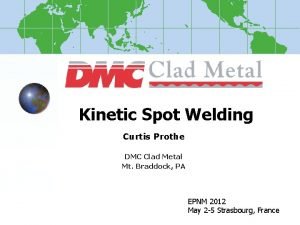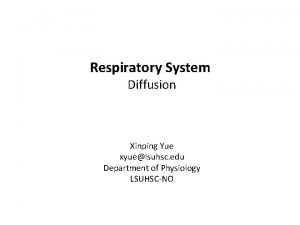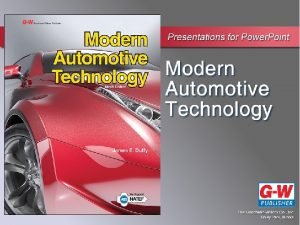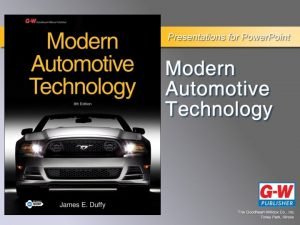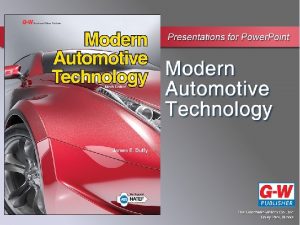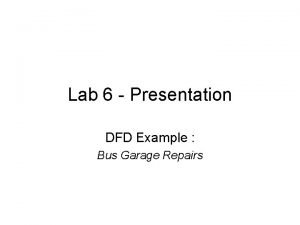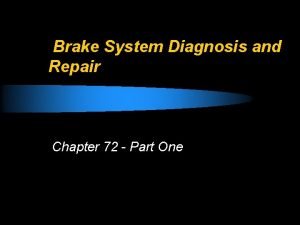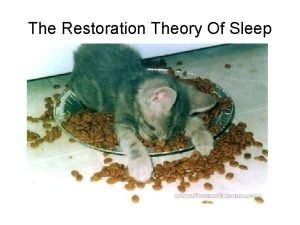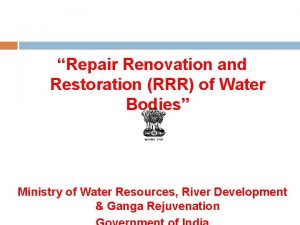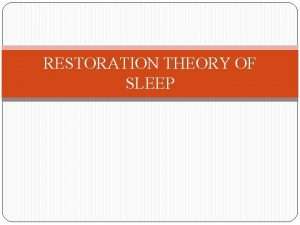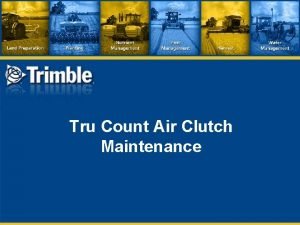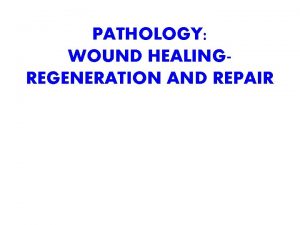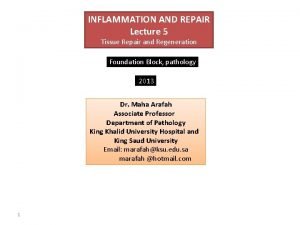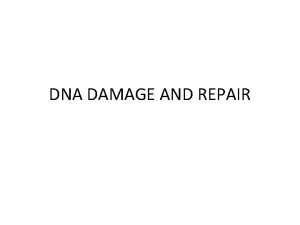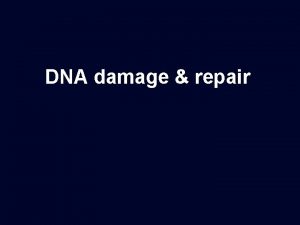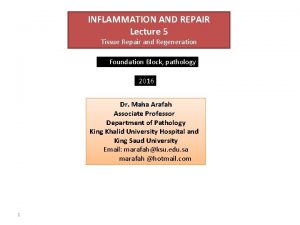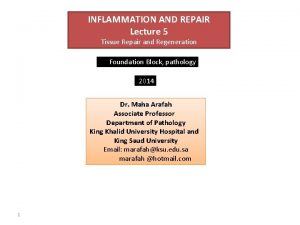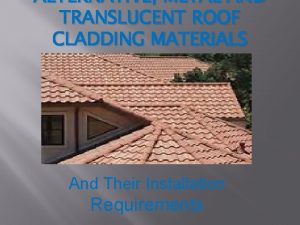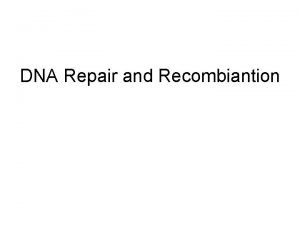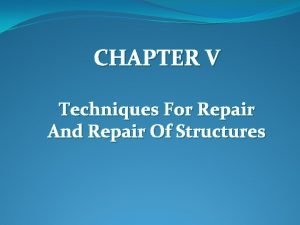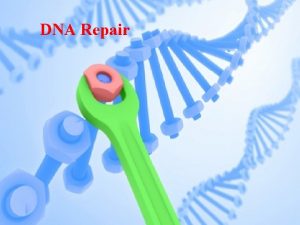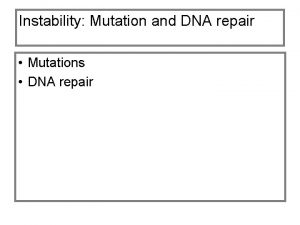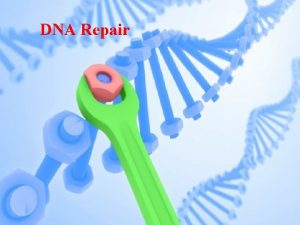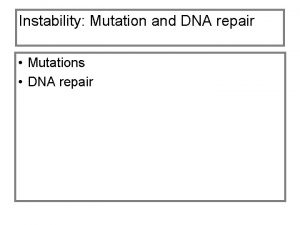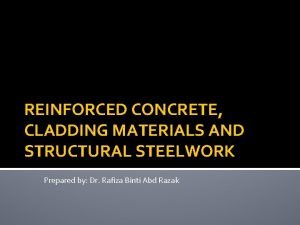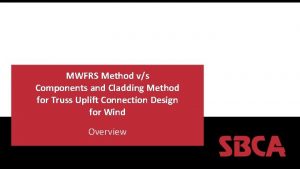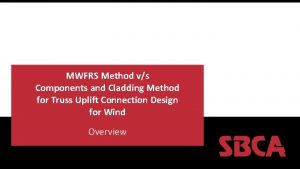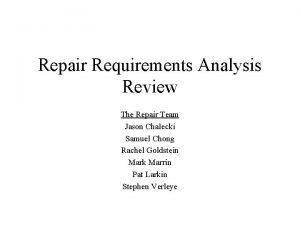I P R S LIMITED CLADDING REPAIR AND






















- Slides: 22

I. P. R. S LIMITED CLADDING REPAIR AND COATING SYSTEM SPECIALISTS Introduce Vero Metal For Architectural Finishes

ARCHITECTURAL FINISHES Vero. Metal® Typical application areas • Sanitary products (wash basins, toilets, bathtubs, showers, soap dispensers etc. ) • Fittings (door handles, doorplates, covers, etc. ) • Light switches and cover frames • Working surfaces • Floors, Walls & Ceilings • Medical Furniture (beds, cabinets, trolleys, refrigerators, etc. ) • Medical Equipment (casings, monitors, touch surfaces, etc. )

ARCHITECTURAL FINISHES Base materials The right choice and application of the most suitable surface pre-treatment is essential for the quality of the final metal coating. Basically a metal surface can be sprayed nearly to every type of substrate. Organic materials: Metals / Construction materials: Wood Cardboard Paper Terracotta Gypsum Ceramic All metals Carbon / Carbon fibre / Glass fibre Glass Plaster Cement

ARCHITECTURAL FINISHES Plastics: ● ● ● ● ● Foam Glass fibre reinforced plastics ABS – Acrylnitril-Butadien-Styrol PA – polyamide PE – polyethylene PP – polypropylene PUR – polyurethane PF – phenolformaldehyde UF – urea-formaldehyde resin etc.

ARCHITECTURAL FINISHES ABOUT VERO METAL • Vero. Metal® is a metabolizing process that seamlessly applies cold sprayable or puttyable metal to almost any surface. As the market leader, Verometal® is set to make your products stand out from the crowd. Available in different metals: Aluminum, Brass, Bronze, Aged Bronze, White Bronze, Copper, Iron, Zinc, Stainless Steel, Tin, Nickel-Silver, Gunsmoke, Reflex S 01 and Medical 01 Copper. • Vero. Metal® looks, feels, and acts like hot-cast metal, because it is up to 95 percent metal. It will adhere to almost any surface, including but not limited to: foam, plastic, gypsum, wood, metal, fiberglass, plaster, ceramics, concrete, terra cotta, cardboard and even paper. Once cured, the product has all the characteristics of a cast metal piece, including texture, luster and heat conductivity. • What makes Vero. Metal® strong? Metal and a polymer binder combine during a chemical reaction to make Vero. Metal®metal composite. This makes the composite greater than the sum of its parts. • The result? Durable metallized surfaces that will capture any design or detail.

ARCHITECTURAL FINISHES Vero. Metal® - technical details Metal surfaces - manufactured by spraying or casting at room temperature Vero. Metal® offers sprayable metal surfaces which consist up to 95 % of metal powders. A mixture of metal powder and binder + hardener is resulting in a cold liquid metal (composite metal) which can be applied by casting or a special spray process to nearly every surface. After the drying process the surfaces show similar properties as cast metal. As a matter of fact: it is real metal. Through our process you realize a strong and durable metallic surface. Shape and design details of the coated objects remain as the original pieces show them. The object however shows metallic structures. As real metal the coating is long-lasting and resistant to strain.

ARCHITECTURAL FINISHES METAL TYPES • • • Aluminum Iron Stainless-steel Brass Bronze Copper Zinc Tin Nickel-Silver Reflex S 01 – special alloy Gunsmoke - special alloy

EXAMPLES OF METAL TYPES & FINISHES

EXAMPLES OF METAL TYPES & FINISHES

ARCHITECTURAL FINISHES Properties and applications Properties • Thermal conductivity • Magnetic (Iron) • Anti-microbial (Copper, alloys) • No electrical conductivity • Surface qualities: glossy, mat, brushed • Reactivity: corrosion (rust), surface appearance can be created artificially. • Partial surface coatings are possible • Micro layers possible - coating of fine structures • Resistant to impacts and stress, no peeling • For suitable long-term usage outside and inside

ARCHITECTURAL FINISHES Applications Design oriented: • • Prototypes and models Product design for all areas of application Replacement of casted pieces Mass production Exhibition and fairs Architecture, Facade, Cladding Interior design Objects of art

ARCHITECTURAL FINISHES Function oriented: • Copper and alloys in ship-building and offshore technologies (anti-fouling) • Copper and alloys for Hygienic applications (anti-microbial) • Copper and alloys with biocide effect • Stainless Steel for corrosion- and impact protection

ARCHITECTURAL FINISHES Process description A. Pre-treatment of the substrate Vero. Metal® offers composite metals which bond with the substrate in a very elastic way. The strength of the bond and therefore the quality of the final piece depend on the correct pre-treatment of the surface of the work piece. Target of the pre-treatment is to achieve a smooth, dry and residue-free surface. Processes like degreasing, grinding, tumbling and blasting can help to remove surface impurities like dust, humidity, oil or solvents. In case of porous substrates like wood or gypsum cavities or holes can be treated with fillers in order to reach a better surface quality. Borders and edges should be ground in order to allow a better polishing of these areas later which will improve the desired decoration effect.

ARCHITECTURAL FINISHES B. Spraying of the composite metal The composite metal consists of three different ingredients: metal powder, binder and hardener. The mixture of the ingredients is sprayed on the substrate at room temperature. The desired effect and the necessary final treatment define thickness of the layer, which normally varies between 70 and 150 micron. After the spraying process the work piece should rest for approximately 60 minutes. Then the work piece is dried for 6 - 12 hours at a temperature of 20 -60°C. Afterwards the surface is ready for the next treatment steps.

ARCHITECTURAL FINISHES C. Surface treatment The dry substrate has a mat surface which shows eventually some uneven parts and an oxide layer, which is due to the chemical reaction during the hardening process. Blasting or grinding will remove the reactive layer as well as uneven surface areas. The function of the mat metal surface is now perfect. The composite metal can be treated with various processes: additional blasting, grinding, polishing (high gloss or mat), semi-bright brushing, oil grinding, machine treatment or engraving result in surfaces of a different smoothness, brightness and structure. An acid treatment with different solutions causes a chemical change of the metal surface within a few hours. The following effects are possible: • Blackening of bronze, brass and copper • Corrosion of bronze, brass, copper, • nickel-silver and iron Corrosion (Rust) of iron

ARCHITECTURAL FINISHES D. Sealing or natural surface changes The condition of the final metal surface can be maintained for a short period using a special sealing or can be protected by a clear lacquer for long lasting. In case the surface is only cleaned after the final treatment the metal changes in a natural way. A less smooth surface will show corrosion and reactions much faster than a smooth one.

ARCHITECTURAL FINISHES Technical properties Layer composition 1. Composite metal: 2. Treatment: 3. If required, clear coating: approx. 70 – 150µ decrease of approx. 20 – 60µ approx. 80µ Functional effects 1. Ongoing studies on anti-microbial effects in hospitals. • Bacterial Killing Rate of 99, 9% within 2 hours for Copper and Brass 2. Physical stress resistance • • • Abrasion resistance Adhesion (tape/knife/tensile) Impact resistance Solvent resistance Hardness (pencil / Barcol)

VERO METAL – SAMPLE APPLICATION AREAS External Facade Window Frame Interior Wall Plaster Board Arch Way Interior Fit-Out Design Stairs Flooring

VERO METAL – SAMPLE APPLICATION AREAS Musical Timber Metal See www. verometal. com for application areas in detail Signage Tiling

Frequently Asked Questions ? 1. Is it paint? No, it is not metal paint. It is a cold sprayable metal composite, comprised of up to 95% pure metal. 2. Is it metal plating? No, metal plating is an electrochemical process. Vero. Metal®, is a cold spray metallization process that can be applied to a variety of surfaces. These include but are not limited to: Laminate, melamine, wood, plastic, gypsum, fiberglass, ceramics, concrete, foam, porcelain, glass, and metal. 3. Is it powder coating? No, powder coating is baked on. Vero. Metal® is sprayed on, rolled on, hand-applied, or poured on. It also may be cast. It is not heat cured. 4. Can it be used on outdoor products? Yes, over the proper substrate and when properly applied. There is a documented ASTM testing with zero breakdown equivalent to 30 years. 5. Does Vero. Metal® require special equipment? No, most manufacturers have the necessary equipment, such as spray guns and polishing items. Vero. Metal® Gmb. H can assist you in selecting the proper equipment.

Frequently Asked Questions Cont’d ? 6. Is there a thickness limitation? No, it can be applied as thick as you desire. The desired and most economical thickness is 0. 07 - 0. 15 mm. 7. How many coats are needed? One spray application will achieve the desired thickness of 0. 07 - 0. 15 mm. 8. What substrate can it not be sprayed on? None have been identified yet. 9. What is the coverage of each Vero. Metal® kit? Each kit covers 9 -18 square meter, depending on the skill of the spray operator, the surface and the shape of the piece. 10. Is there any special training? Yes, IPRS qualified applicators have carried out the specific training required by Vero Metal.

Frequently Asked Questions Cont’d ? 11. Does Vero. Metal® shrink? No, because Vero. Metal® is not metal paint, it does not shrink due to evaporation. 12. Is there really no heat involved? That's right. There is no heat distortion and no heat impact on the substrate. Vero. Metal® is a cold process. 13. Is Vero. Metal® flexible? Yes, Vero. Metal® can be applied to flexible surfaces. 14. Does Vero. Metal® conduct electricity? No, Vero. Metal® does not conduct electricity. It will also not corrode the substrate.
 Tegral agri sheeting
Tegral agri sheeting Excision repair
Excision repair Mismatch repair
Mismatch repair Cladding deflection limits
Cladding deflection limits Optical cladding
Optical cladding Field assembled cladding
Field assembled cladding Masonry veneer curtain walls
Masonry veneer curtain walls Brittle cladding
Brittle cladding Dmc cladding
Dmc cladding Perfusion vs diffusion limited
Perfusion vs diffusion limited Ligation
Ligation Brake system diagnosis and repair
Brake system diagnosis and repair Modified macpherson strut
Modified macpherson strut Peak and hold injector waveform
Peak and hold injector waveform Chapter 44 automotive wiring and wire repair
Chapter 44 automotive wiring and wire repair Dfd parts
Dfd parts Form 337 example
Form 337 example Pedal reserve distance
Pedal reserve distance Auto upkeep answer key
Auto upkeep answer key Repair and restoration theory of sleep
Repair and restoration theory of sleep Rrr of water bodies
Rrr of water bodies Repair and restoration theory of sleep
Repair and restoration theory of sleep Tru count air clutch
Tru count air clutch


